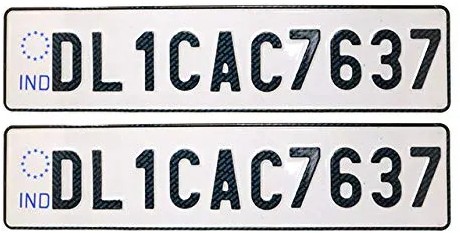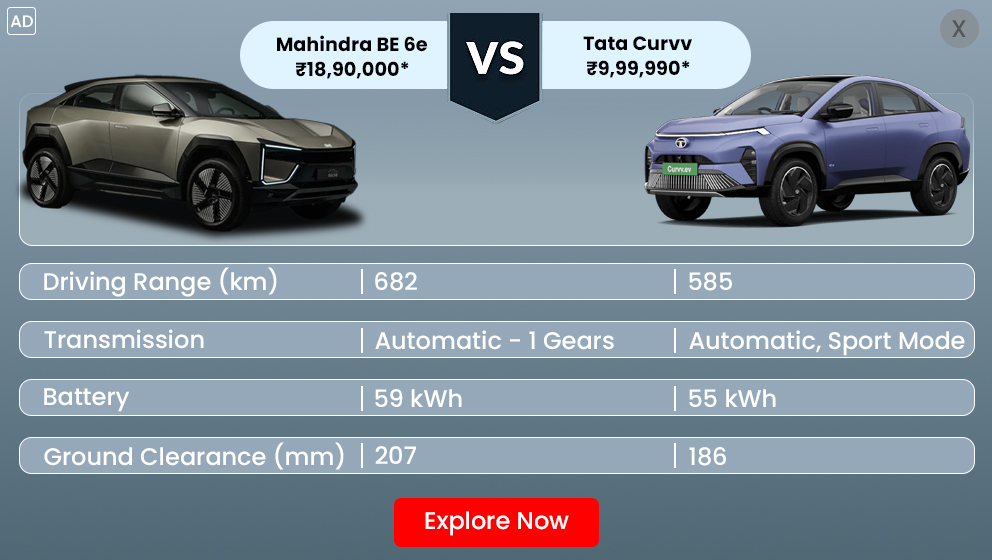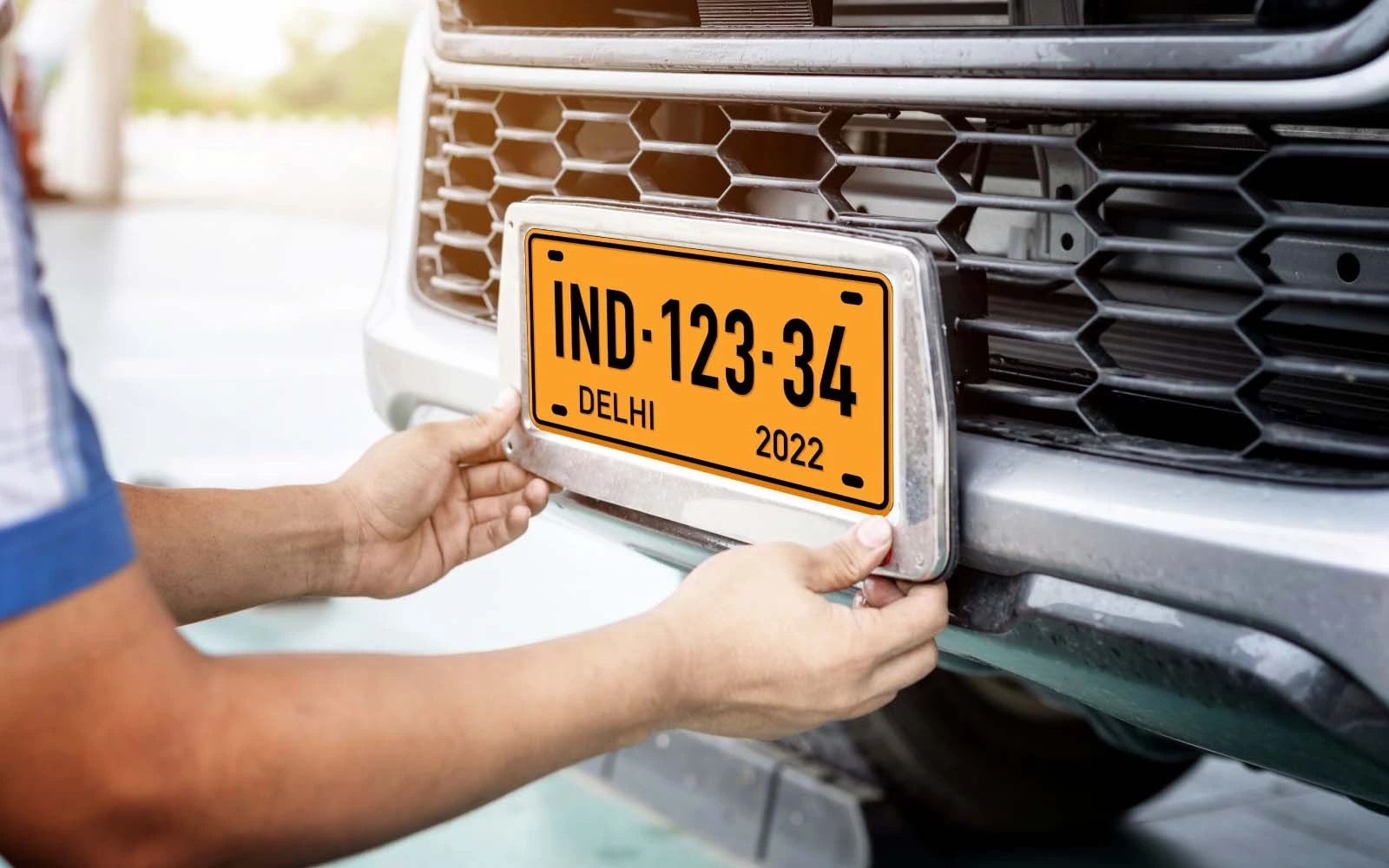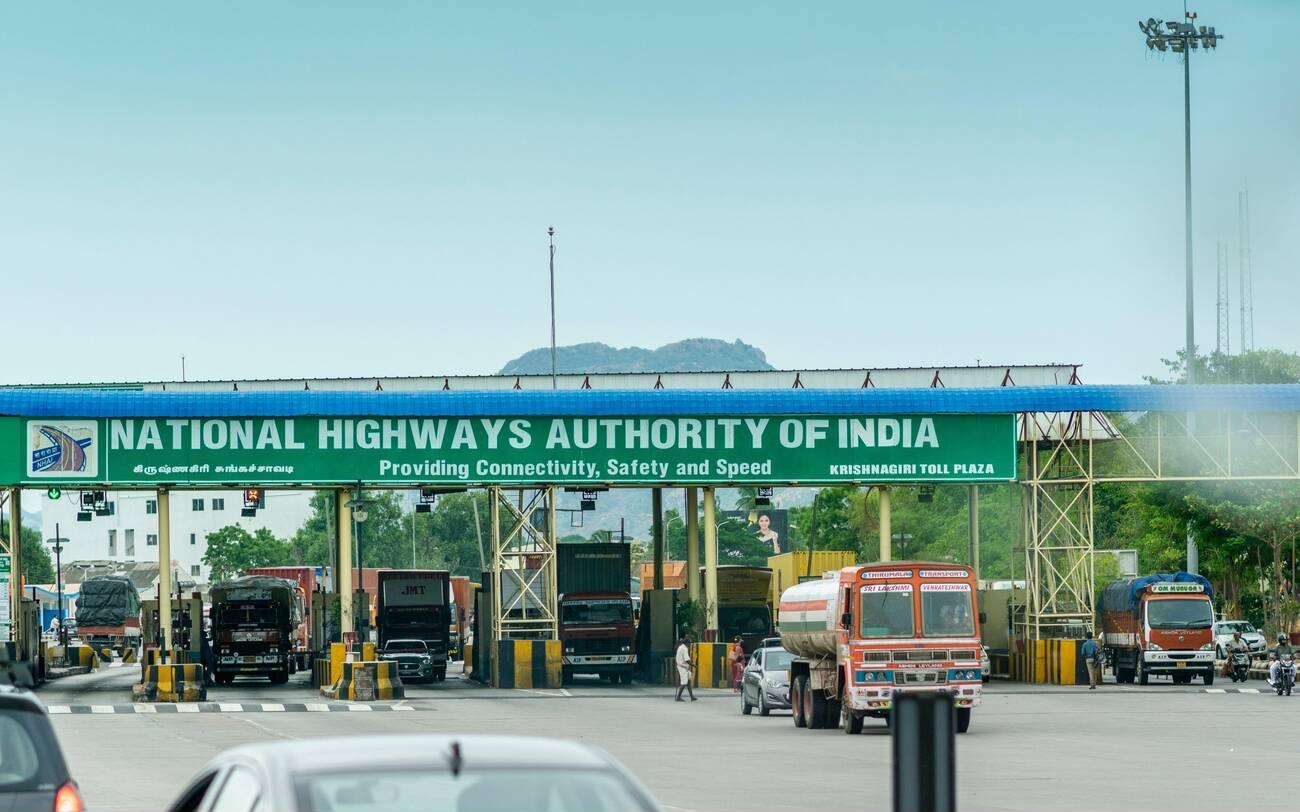Ever noticed different colors on vehicle number plates and wondered what they mean? Vehicle number plates are not just a combination of letters and numbers; they carry significant information about the type of vehicle, its usage, and even its ownership. Understanding the different types of number plates can help you recognize vehicles' legal classifications, ensuring better compliance with traffic rules.
In India, the Regional Transport Office (RTO) is responsible for issuing vehicle number plates. Each type of plate serves a distinct purpose and is governed by specific regulations under the Motor Vehicles Act. Let’s explore the different types of number plates in India, their significance, and the legal guidelines surrounding them.
What is a Vehicle Number Plate?
A vehicle number plate, also known as a registration plate, is a mandatory identification tag issued by the RTO for every registered vehicle in India. It is an aluminum plate attached to the front and rear of a vehicle and displays a unique registration number. The number plate serves as a legal identifier, linking the vehicle to its owner.
Components of a Vehicle Number Plate:
- First two letters: Indicate the state where the vehicle is registered (e.g., "MH" for Maharashtra).
- Next two digits: Represent the RTO where the vehicle was registered.
- Unique alphanumeric code: Assigned to each vehicle for identification.
- IND marking: Represents India’s international registration code.
Different Types of Number Plates in India
The Indian vehicle number plate system follows a specific color scheme, and each type of plate signifies a different category of vehicle. Here are the eight types of number plates issued by the RTO:
1. White Number Plate (Private Vehicles)

- Usage: Used by private and personal vehicles.
- Features: Black letters and numbers on a white background.
- Regulations: Not allowed for commercial use.
2. Yellow Number Plate (Commercial Vehicles)
.jpg)
- Usage: Used for transport and commercial vehicles such as taxis, auto-rickshaws, buses, and trucks.
- Features: Black letters and numbers on a yellow background.
- Regulations: Requires a commercial driving license to operate.
3. Black Number Plate (Self-Rental Vehicles)

- Usage: Vehicles used for self-rental services like Zoomcar, Revv, and Drivezy.
- Features: Yellow letters and numbers on a black background.
- Regulations: Can be driven without a commercial driving license.
4. Green Number Plate (Electric Vehicles - EVs)
.jpg)
- Usage: Assigned to electric vehicles (EVs) to promote eco-friendly transportation.
- Features:
- Private EVs: White lettering on a green background.
- Commercial EVs: Yellow lettering on a green background.
5. Red Number Plate (Temporary Registration)

- Usage: Issued for newly purchased vehicles before permanent registration.
- Features: White letters and numbers on a red background.
- Regulations: Valid for 30 days from issuance.
6. Blue Number Plate (Foreign Diplomats and Embassies)
.jpg)
- Usage: Used by foreign embassies, consulates, and diplomatic missions.
- Features: White letters and numbers on a blue background.
- Regulations: Includes codes like "CC" (Consular Corps) and "UN" (United Nations).
7. Number Plate with an Upward-Pointing Arrow (Military Vehicles)

- Usage: Exclusive for vehicles used by the Indian Armed Forces.
- Features: Black letters and numbers on a yellow background with an upward-pointing arrow.
- Regulations: Issued directly by the Ministry of Defence.
8. Red Number Plate with India's Emblem (Government Officials)
- Usage: Used by top-ranking government officials such as the President of India, Vice President, Governors, and Lieutenant Governors.
- Features: White letters and numbers on a red background, with the Indian national emblem.
Also Read: High Security Number Plate (HSRP) Everything You Should Know
Laws and Regulations Related to Vehicle Number Plates
The Motor Vehicles Act, 1988, mandates all motorized vehicles to be registered and display an official number plate. Here are some key legal rules related to number plates:
1. High-Security Registration Plates (HSRP)
- Introduced for all vehicles registered after April 1, 2019.
- Made of aluminum with a unique laser-etched code for tracking.
- Reduces vehicle theft and fraud.
2. Restrictions on Temporary Number Plates
- Driving with a paper-printed temporary number plate is illegal.
- Temporary plates must now have red alpha-numerals on a yellow background.
3. New BS-VI Vehicle Registration Rules
- BS-VI compliant vehicles must have a 1 cm green strip on the number plate.
- Petrol/CNG vehicles: Blue sticker.
- Diesel vehicles: Orange sticker.
4. Prohibited Modifications
- No fancy fonts, symbols, or decorative plates allowed.
- Use of regional language characters is banned.
- The rear number plate on commercial vehicles must be placed at 1m height from the ground.
Other Types of Vehicle Number Plates in India
Apart from the color-coded plates, there are special vehicle registration plates used based on the validity and security requirements.
1. Temporary Registration Plate
- Issued for newly purchased vehicles.
- Valid for 30 days before obtaining a permanent number.
2. Permanent Registration Plate
- A unique lifetime identification number for vehicles.
- Must be registered at the RTO before using it on public roads.
3. Fancy Number Plate
- Personalized or VIP number plates chosen by the vehicle owner.
- Must comply with RTO regulations.
Penalty for Driving Without a Number Plate
Driving without a valid vehicle number plate or displaying an “Applied For” sign can lead to hefty fines. Here’s what you should know:
- Fine for no number plate: ₹4,500 under Section 177 of the Motor Vehicle Act.
- Fine for improper number plate: ₹1,000 for first-time offenders.
Conclusion
Understanding the different types of number plates in India helps in identifying vehicles based on their purpose and ownership. The RTO assigns these plates based on strict legal guidelines under the Motor Vehicles Act, 1988. With the introduction of High-Security Registration Plates (HSRP) and BS-VI emission norms, the government aims to improve road safety, reduce fraudulent activities, and enhance vehicle tracking.
Whether you own a private car, commercial vehicle, or an electric vehicle, ensuring you have the correct number plate is essential to avoid fines and legal issues. So, the next time you see a vehicle, take a closer look at its number plate—it tells you more than just a registration number!
Also Read: Cancel Your Vehicle Challan Easily in National Lok Adalat 2025










_1764831361.webp)
